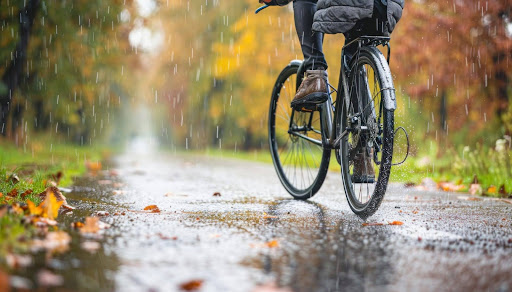As an avid mountain and road biking enthusiast, I’ve learned that winter doesn’t have to mean the end of the cycling season. With the right preparation and knowledge, you can safely enjoy biking year-round. Here are some essential tips to keep you safe and comfortable during your winter rides.
Gear Up Properly
Proper gear is crucial for winter cycling. Start by layering your clothing: begin with a moisture-wicking base layer, add an insulating mid-layer, and finish with a windproof outer layer. Don’t forget to protect your extremities with good-quality winter cycling gloves, thermal socks, and shoe covers. Your head needs attention too; a thermal skull cap or balaclava under your helmet can make a huge difference in maintaining body heat.
Prepare Your Bike
Your bike needs winter preparation as well. Consider switching to winter tyres, such as studded tyres for icy conditions or wider tyres with more tread for better traction in snow. Lower your tyre pressure to increase the contact patch with the ground, improving grip. Installing fenders will protect you from spray and keep you drier in wet conditions, making your ride more comfortable.
Enhance Visibility
Visibility is paramount in winter cycling. Use bright lights, both front and rear, which are crucial in the shorter daylight hours of winter. Additionally, wear reflective gear; reflective strips on your clothing or bike can make you more visible to drivers, enhancing your safety on the road.
Adjust Your Riding Technique
Winter conditions require adjustments to your riding technique. Slow down, especially when cornering or descending. Brake earlier and more gently, as icy or wet conditions increase stopping distances. Be particularly aware of black ice, which is often found in shaded areas or on bridges. These small adjustments can significantly improve your safety during winter rides.
Plan Your Route
Route planning becomes more critical in winter. Stick to familiar paths as winter isn’t the best time to explore new, potentially hazardous routes. Always check weather forecasts and be prepared to change plans if conditions worsen. It’s important to remember that there’s no shame in cutting a ride short if conditions become unsafe.
Conclusion
The goal is to enjoy winter cycling while prioritising your safety. With these tips in mind, you’ll be well-prepared to tackle the winter cycling season. Stay safe, have fun, and keep pedalling!
Written by Niall O’Riordan UBS
